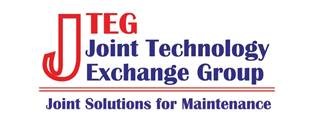AGENDA
1300-1305: Welcome – Steve McKee (OSD-MR) Presentation
1305-1309: Administrative Notes – Debbie Lilu (NCMS)
1309-1330: Overview and DoD CPO Office – Mr. Robert Herron (OSD-MR) Presentation
1330-1350: Corrosion Modeling Toolset for Designers and Engineers – Glenn Rosen (SIEMENS) and Alan Rose (CORRDESA) Presentation
1350-1410: Continuous Environment and Corrosivity Monitoring for Improved Materials Selection and Asset Management – Dr. Fritz Friedersdorf (Luna Labs) Presentation
1410-1430: Autonomous Vision Based 3D Structural Health Monitoring – Vedhus Hoskere (University of Houston)
1430-1450: Rapid Autonomous Corrosion Evaluation Service (RACES) – Felix Martinez (Serco, Inc.) Presentation
1450-1500: Wrap-Up & Survey – Steve McKee (OSD-MR)
Minutes
Event: On 27 September 2022, the Joint Technology Exchange Group (JTEG), in coordination with the National Center for Manufacturing Sciences (NCMS), hosted a virtual forum on “Corrosion Detection, Prevention, and Control”.
Purpose: The purpose of this forum was to discuss the challenges and solutions, research and development, and implementation of corrosion detection, prevention, and control capabilities in support of DoD sustainment.
Welcome: Steve McKee, OSD-MR, welcomed everyone to the forum and provided a brief introduction of the presenters and emphasized the significance, challenges and impact that corrosion related innovations have within the DoD sustainment community.
Administrative: This was a large audience with 84 people in attendance. This was an open forum. The presentations, along with questions and answers, were conducted through Zoom.Gov which provided a well-used chat capability for comments and Q&A.
Overview and DoD CPO Office – Robert Herron (OSD-MR), described the DoD Corrosion problem and noted since 2003, the DoD spends over $20B annually on corrosion, representing
over 20% of the total maintenance cost, or 24 million hours of downtime at $833 per
down-time hour. He explained where corrosion prevention and control (CPC) fit in maintenance planning to include reliability and maintainability (preventive & corrective maintenance) and used several examples and models to illustrate relationship between corrosion and maintenance costs. He also discussed the DoD CPC Planning Guidebook and where you can find CPC expertise.
Corrosion Modeling Toolset for Designers and Engineers – Glenn Rosen (SIEMENS) and Alan Rose (CORRDESA), (FRC-SW), demonstrated their corrosion modeling toolset and the types of corrosion analysis possible to include predictive corrosion simulations. They used several examples to highlight the capabilities. The stated they have created an easy-to-use tool for M&P engineers/corrosion managers which can be integrated into Teamcenter, to control workflow & data and is easily deployed, accelerating implementation. They used MIL-STD-889D and leveraged in 3D corrosion models, and it very quickly assessed material choice for corrosion mitigation.
Continuous Environment and Corrosivity Monitoring for Improved Materials Selection and Asset Management – Dr. Fritz Friedersdorf (Luna Labs) explained that Luna Labs is making an impact through adoption of new protective coatings and materials, implementing preventative maintenance practices, and managing individual aircraft corrosion throughout the O&S phase. Some of the actions Luna Labs is involved in include performance testing of chromate vs non-chromate primers, continuous and quantitative sensor measurements, Acuity LS and CR systems for coatings performance, and total galvanic corrosion. They also described several aircraft corrosion health monitoring examples.
Autonomous Vision Based 3D Structural Health Monitoring – Vedhus Hoskere (University of Houston) described the advantages of automating visual inspections with 3D condition assessment and how it works. He then provided a 3D condition assessment example and detailed the research challenges involving automating AI model supervision, developing robust artificial intelligence (AI) models for condition assessment, strategies for optimal data collection, and integrating AI models into 3D visualization. He used examples to illustrate each challenge and finished with a discussion of future possibilities with near real-time 3D awareness and AI with other sensors.
Rapid Autonomous Corrosion Evaluation Service (RACES) – Felix Martinez (Serco, Inc.) explained how Serco partnered with Google, to introduce a turnkey rapid scanning service for conducting surface condition evaluations of ship topside (using autonomous UAVs), underwater hull, and flooded internal tanks (using ROVs). Ship topside and underwater hull scans were completed in less than 8 hours. The data is then sent to a secure Google Cloud server, where the Serco Scan Analysis Center runs Google AI/ML tool and generates easy-to-understand scan reports available within 48 hours. RACES is also available for other shipyard infrastructure inspections, such as cranes, docking stations, and piers.
Q&A – A Q&A occurred after each briefer finished their presentation. Questions and answers will be posted on the JTEG website with these minutes.
Closing Comments: Steve McKee thanked the presenters and participants for their attendance and all the work being done to support corrosion-related innovations in support of DoD sustainment operations.
Action Items:
- Obtain copies of remaining cleared presentations once they are approved to post to a public website, and post to the JTEG website at https://jteg.ncms.org/.
Next JTEG Meeting: The next scheduled JTEG virtual forum is 25 October 2022, 1:00 – 3:00 pm EST. The topic is “Reverse Engineering, 3D Printing, and Prototyping”.
POC this action is Ray Langlais, rlanglais@lmi.org, (571) 633-8019
